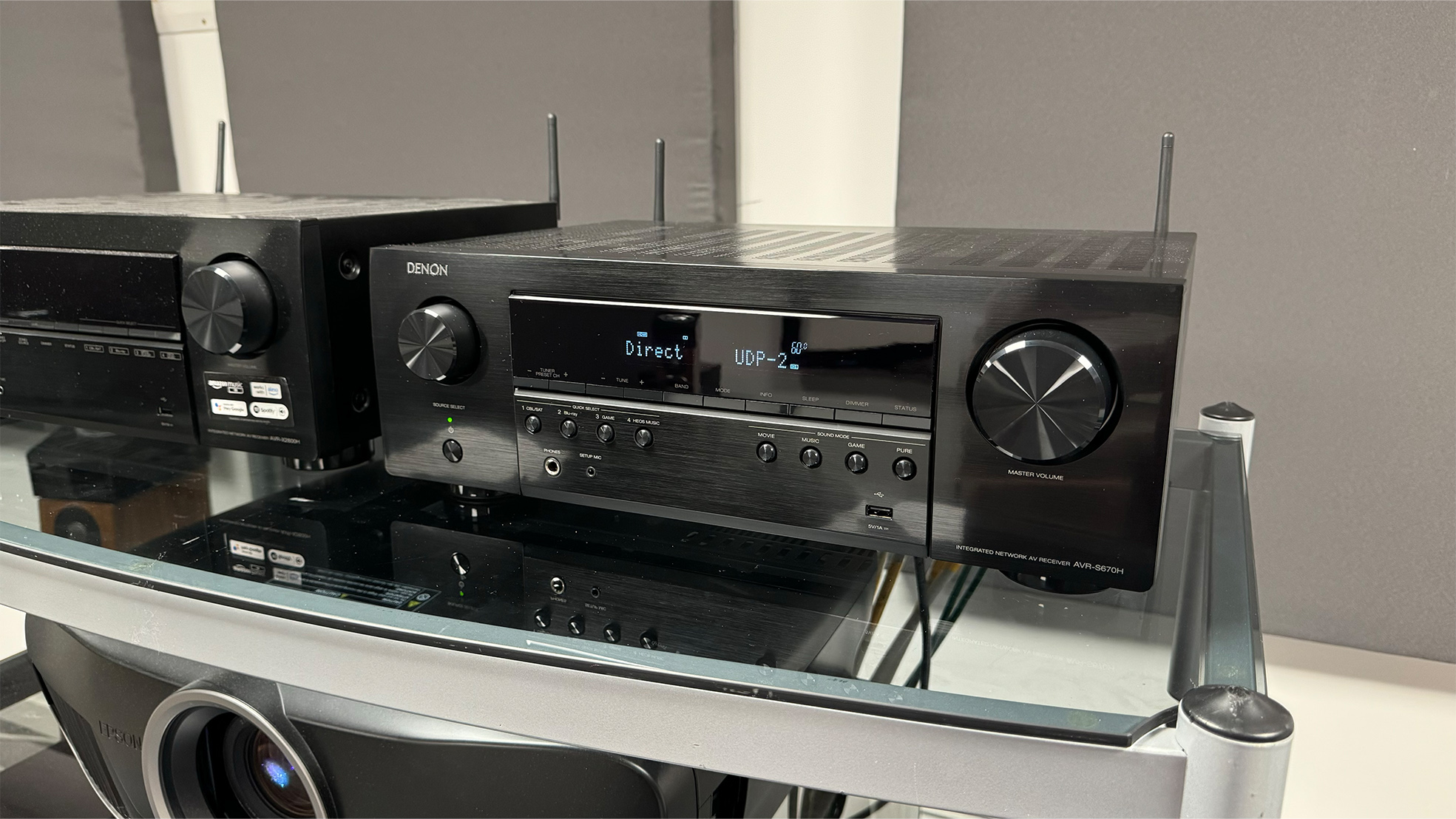
Denon’s X-series AV amplifiers and receivers have been hugely successful in terms of both reviews and sales. In fact, it’s probably fair to say that it completely dominates a big chunk of the AVR market.
That said, prices have risen with each new generation of X-series amps, and what once was entry-level is now firmly mid-market. That’s where Denon's S-series comes in. Designed to sit below the X-series and offer every core feature that someone new to home cinema amplifiers might need while stripping out some of the expensive elements that they probably don’t, the S-series is a tempting proposition.
This AVR-S670H model sits around the middle of the S-series and offers five channels of amplification, two subwoofer outputs, three HDMI 2.1 inputs (plus three standard HDMI inputs) and super-simple (by AVR standards) set-up and operation. That all seems perfectly promising, but there are a couple of issues.
Price
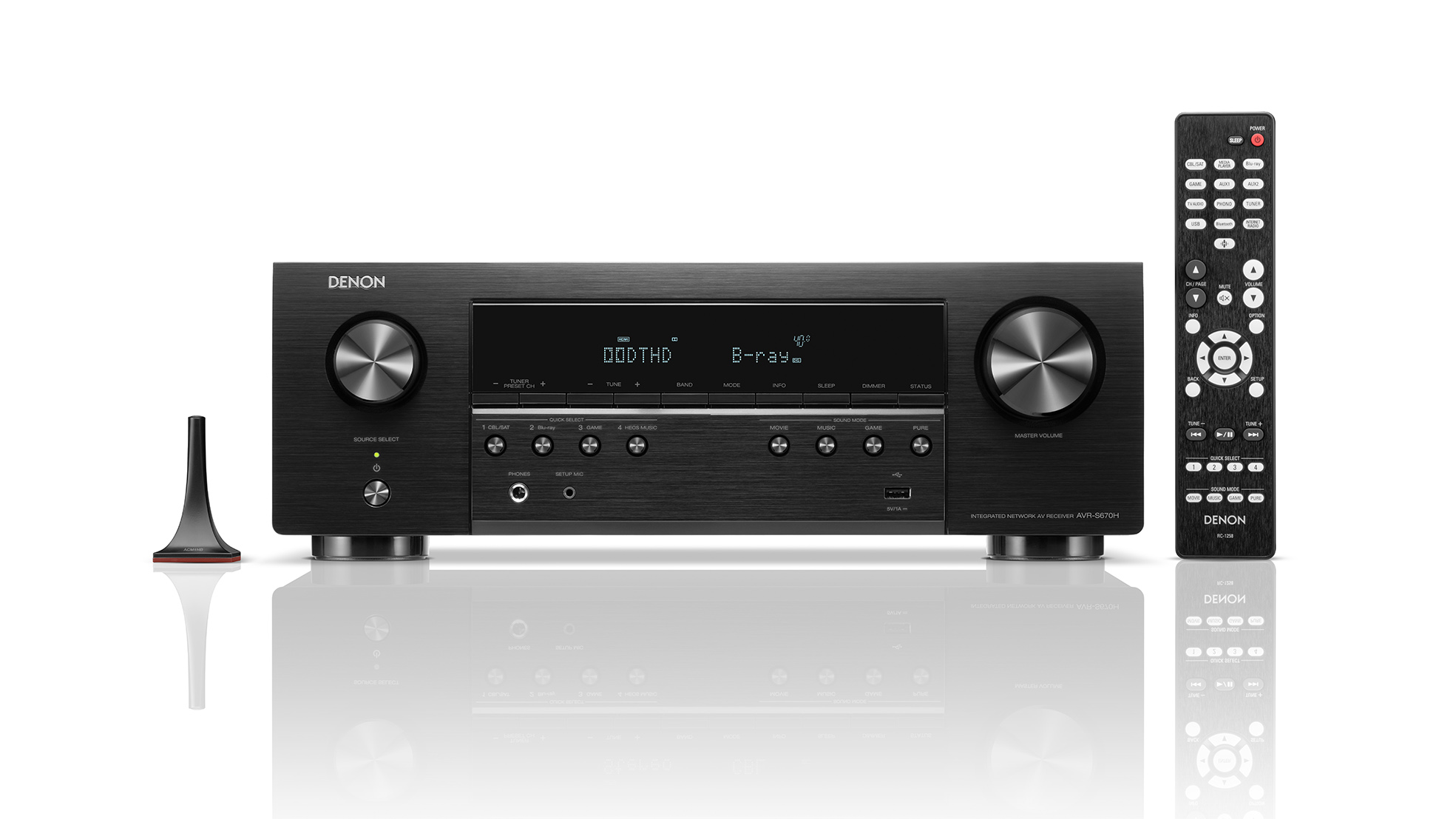
The first of those issues concerns pricing. The Denon AVR-S670H is priced at £599 / $549 / AU$699, which initially looks like good value – and arguably genuinely is in the US and Australia. However, the Award-winning AVR-X2800H, which launched at £869 / $1200 / AU$2399 in 2022 and has remained at that sort of level in the US and Australia, is regularly (and currently) available for just £599 in the UK. Not only is this a better-specified AVR, but it also sets a high benchmark in terms of sound quality.
The X-series AVR-X1800H, meanwhile, is available for £499 / $749 / AU$950. Unfortunately, we have not yet been able to review that particular model, but it enjoys a higher position in Denon’s lineup than the AVR-S670H we have here.
Finally, it’s worth noting that Denon also sells an AVC-S670H (note the 'C') which does without the AVR-S670H’s FM/AM tuner but is otherwise, we are told, identical. You can usually save a little bit of money by opting for the AVC model.
Design
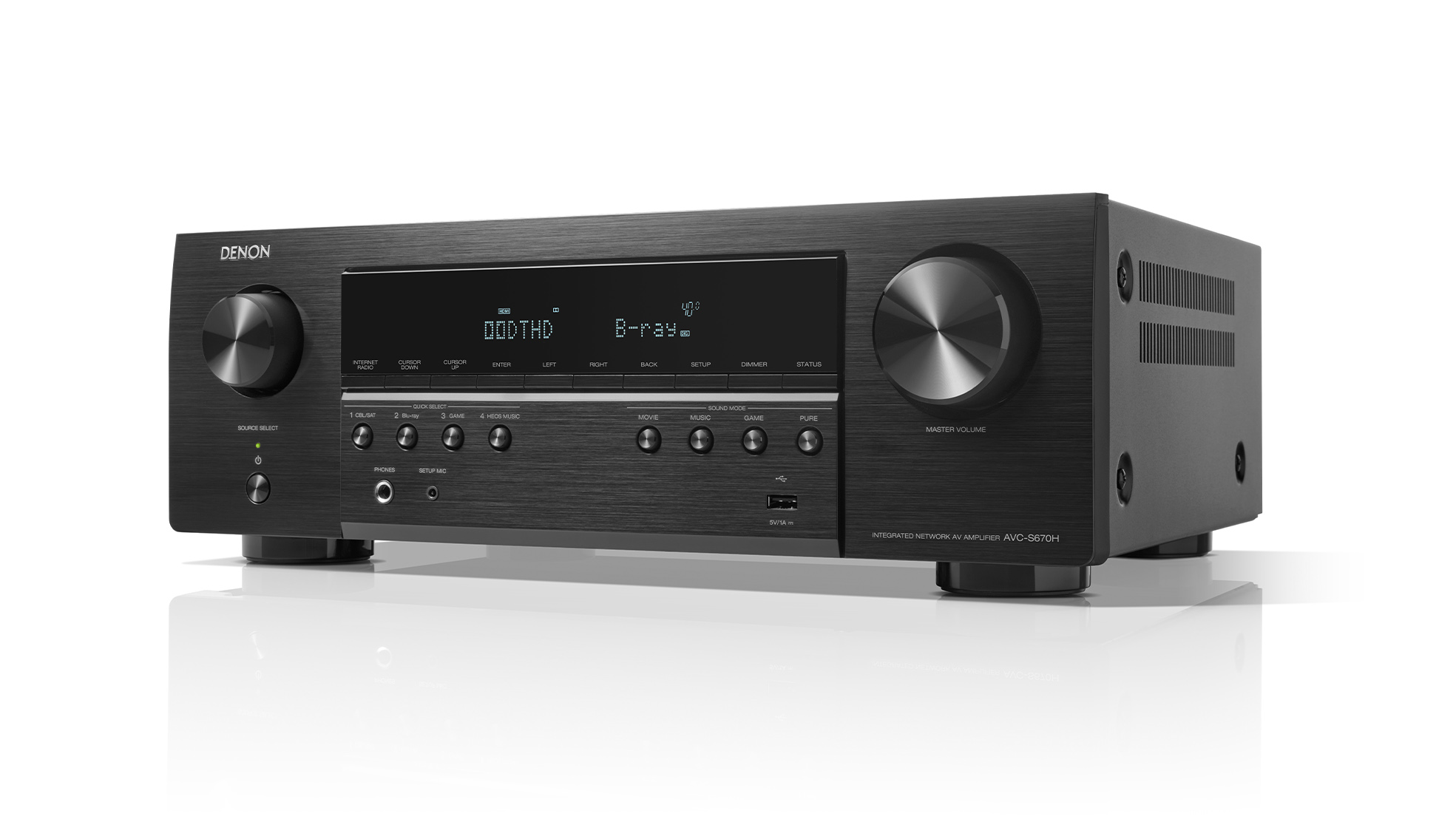
The AVR-S670H is fairly compact by general receiver standards, no doubt at least partly due to it featuring just the five amplifiers. This compactness is really just in the depth measurement, though – the height and width are a roughly typical 15 x 43cm.
Higher-end X-series models tend to have buttons hidden below drop-down doors on the front, while the AVR-X2800H has slick, almost hidden buttons on the lip below the front display. The S670H, however, has a series of simple, round buttons on its face, which makes it look comparatively cluttered and old-fashioned. The display is good, though, and there’s a nice feel to the volume and input knobs.
The accompanying remote looks and feels a little basic, but its relatively stripped-back selection of buttons is good and the AVR is very responsive to inputs.
Features
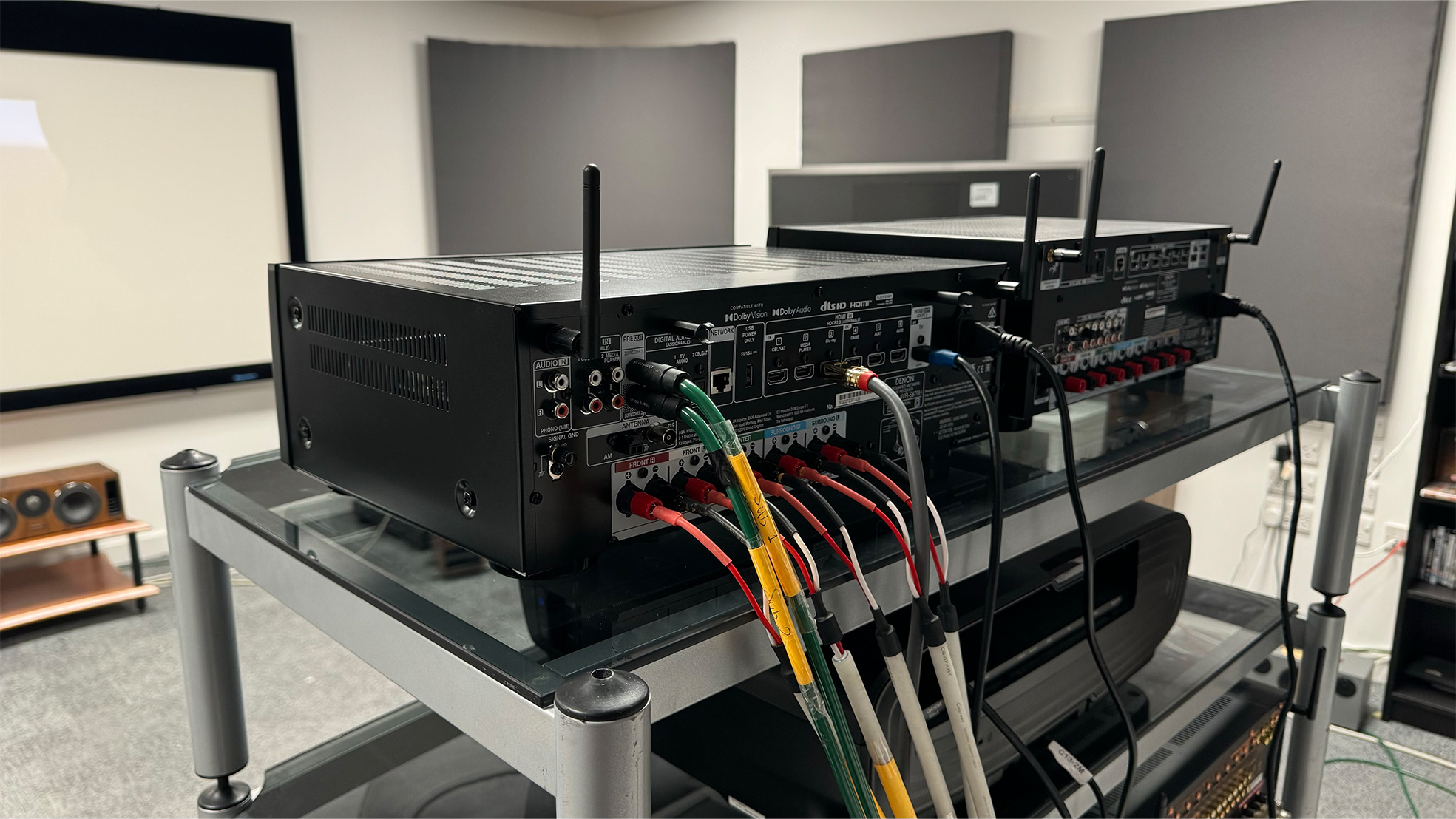
Around the back of the AVR-S670H is a well-curated selection of inputs and outputs. There’s just one HDMI output, which makes sense at this level, and three of the six HDMI inputs are 4K/120Hz affairs that are labelled ‘8K’ but are more useful for their ability to handle 4K/120Hz signals. Gamers will also be pleased that all of the inputs can handle VRR and ALLM. And the receiver can, of course, pass through HLG, HDR10, HDR10+ and Dolby Vision signals.
The non-HDMI connections include two optical inputs, two standard stereo RCA inputs and a dedicated phono input for a turntable, which is a nice touch.
Despite its entry-level position in the range, the AVR-S670H benefits from the same ‘Setup Assistant’ featured on much higher-end AV receivers from Denon and Marantz, including the recently reviewed, premium Marantz Cinema 30. This assistant guides you through the initial installation and calibration of the AVR in a fabulously straightforward manner, complete with animated diagrams for various steps, including stripping and connecting speaker cables.
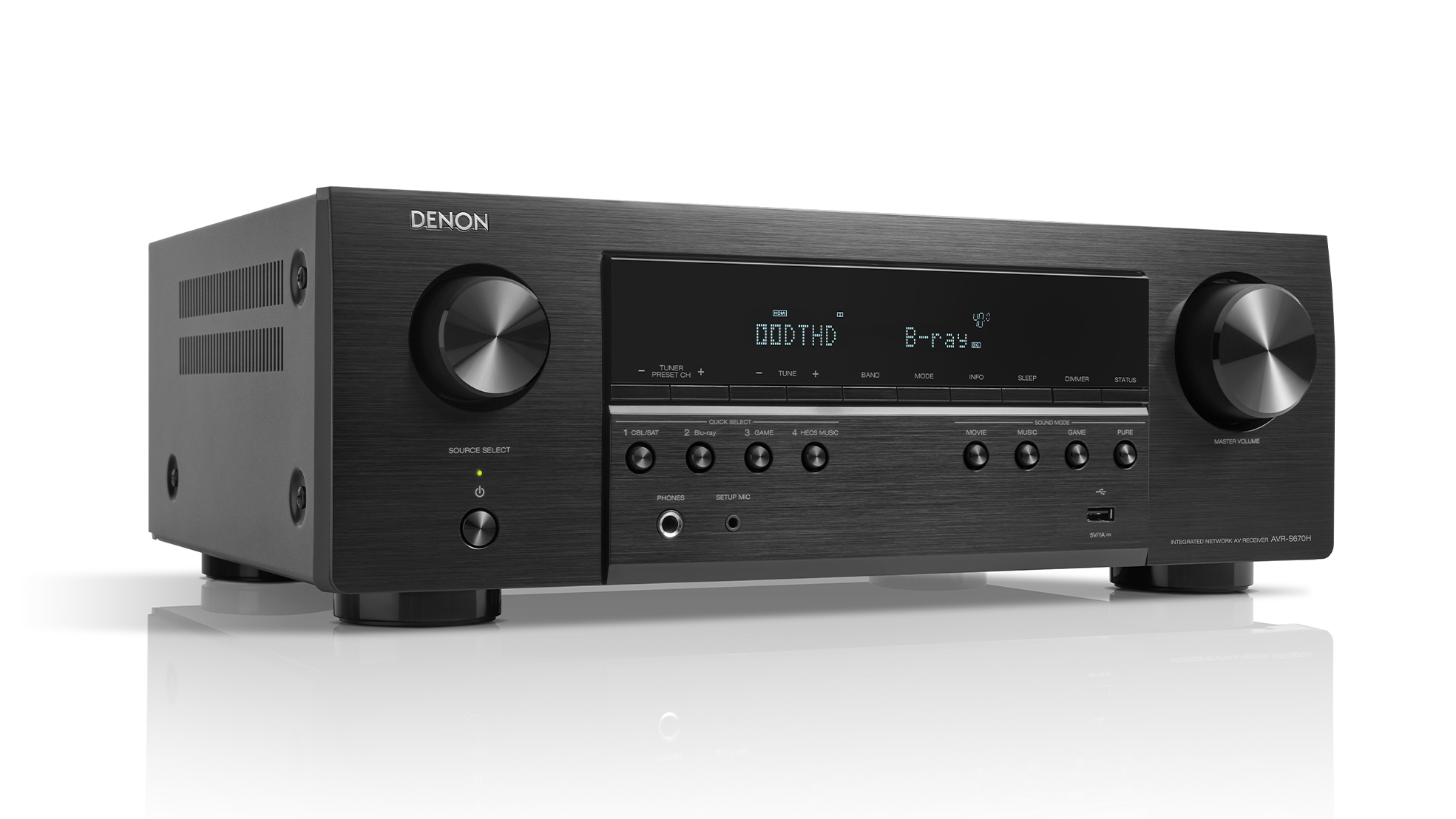
HDMI inputs x 6
HDMI outputs x 1
ARC/eARC eARC
HDMI 2.1 features 4K/120Hz, 8K/60Hz, VRR, ALLM on three HDMI inputs
Amplification 5 channels
Power 75W per channel (8 ohms, 2 channels driven)
Processing 5 channels
HDR formats HDR10, HDR10+, HLG, Dolby Vision
Audio formats Dolby TrueHD, DTS HD Master Audio
Streaming HEOS, AirPlay 2, Spotify Connect, Amazon Music HD, Tidal, TuneIn, Roon Tested, Bluetooth
Voice assistant Compatible with Alexa, Google Assistant, Siri
Towards the end of this process you will be guided through the mic-driven Audyssey calibration, which involves measuring the output from all of your speakers from six positions around the seating position. We find the results to be slightly less accurate than those from the more expensive Denon and Marantz AV receivers we’ve tested lately, so we recommend that you also manually adjust speaker distances and levels if you feel comfortable doing so.
Once you’ve calibrated the speakers, the amp offers to turn on Audyssey Dynamic EQ. This can be useful for late-night listening, but for serious stuff (such as testing) it’s best switched off.
Audyssey Dynamic Volume is automatically disabled if you select not to turn on Audyssey Dynamic EQ, but Audyssey MultEQ – essentially the room correction element – is enabled. This is the basic version of MultEQ; the AVR-X2800H features MultEQ XT.
Another setting to be aware of is Loudness Management, which is another form of dynamic compression specifically for Dolby signals. When you enable it, a dedicated ‘Dynamic Compression’ option becomes available, allowing you to choose how aggressive to make the compression. Again, any form of compression is bad for critical listening so we disable such settings for testing, but you may want to experiment with them for home use.
As this is a five-channel receiver, 3D audio formats such as Dolby Atmos and DTS:X are off the menu. If you want Atmos support now or feel you might in the future, you’re better off with the AVR-X1800H or AVR-X2800H.
Sound
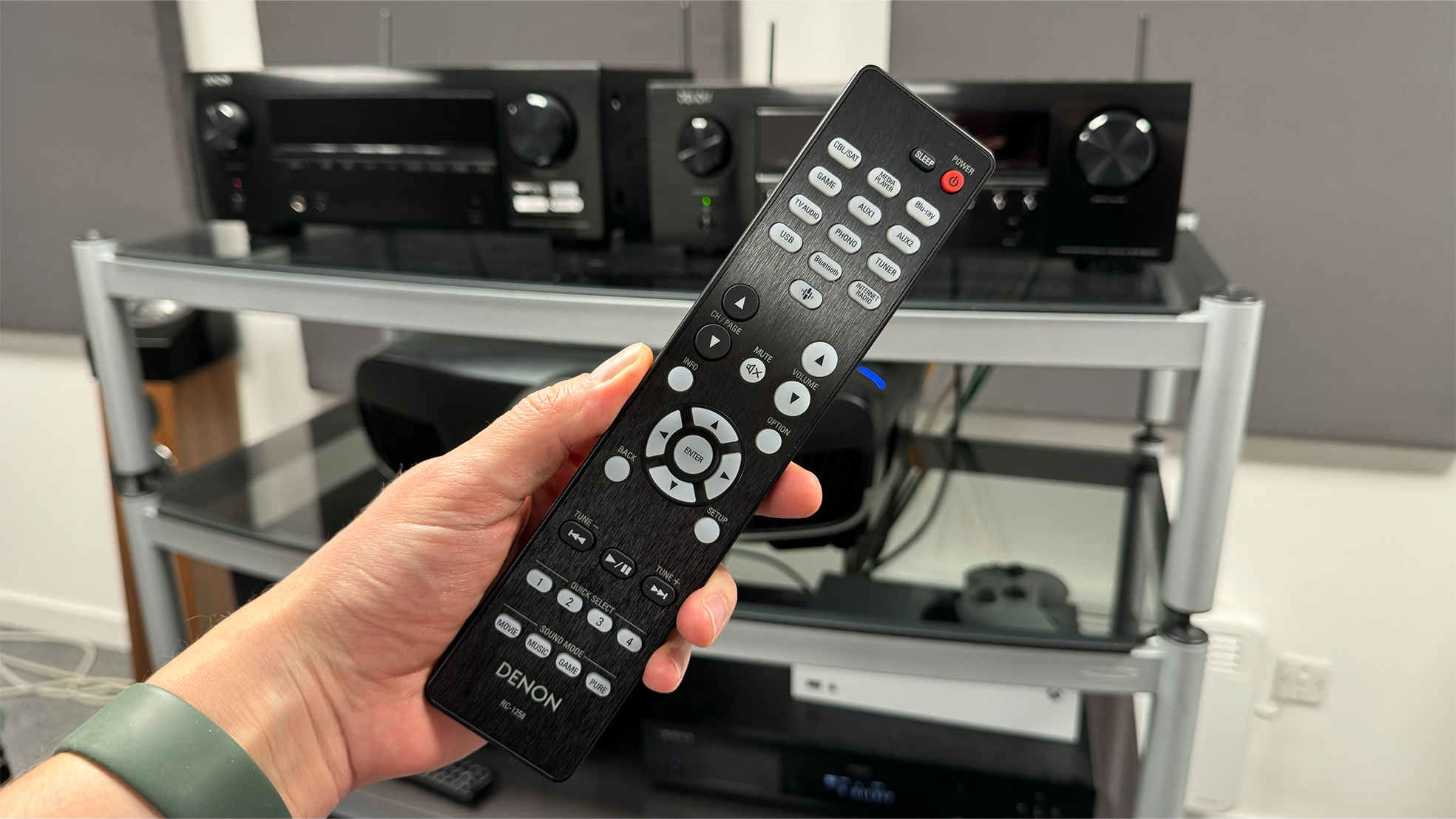
As we’ve discussed many times before, music is actually great for testing an AV receiver, so we kick off with Polyphia’s James Franco. We’re immediately impressed by the energetic nature of the Denon’s delivery. The amp (which is playing in stereo in the Pure Direct mode) isn’t fazed by the quick, start-stop nature of the track. It sounds really crisp and direct and doesn’t struggle to maintain a hold of the frenetic, chaotic ensemble.
Unfortunately, though, while the delivery is lithe and energetic, it’s lacking weight and solidity. The initial strike of each note is crisp and fairly precise, but there’s little in the way of body behind it, making the whole track sound a bit lightweight. The choral swell that appears later in the track is also a little lost on account of the Denon’s lean tonal character.
Invincible by Tool again benefits from the AVR-S670H’s fast-paced delivery, and it highlights the amp’s solid spatial organisation and strong stereo focus. There’s decent detail and low-level dynamic resolution in the way it delivers Maynard James Keenan’s vocals, too. Again, though, we’re frustrated by a lack of weight and warmth. Keenan’s voice lacks some of its richness, and when the bass comes in it feels fairly inconsequential rather than the next important step in the track’s evolution.
We change pace with Cornflake Girl by Tori Amos, and the general lack of weight is evident once again. The lack of solidity behind each note combines with a fairly lacklustre approach to larger dynamic shifts to rob the track of some of its power and impact, making for an overall experience that is less engaging than it should be.

Switching to our first film – Deepwater Horizon – proves once again that the characteristics revealed by music are also present in movies. We are, of course, now listening to the full 5.2 speaker system and we opt for the Direct setting, which is far punchier than Movie.
The AVR-S670H’s energy and enthusiasm are present once more. The regular eruptions and explosions hit with exciting precision and there’s real zing to the debris as it pings around the drilling platform. There’s good dialogue clarity in all but the most sonically chaotic sections, too, so you rarely miss anything important.
But again, we’re disappointed by a lack of weight behind each effect, and as water spews from a pipe we get lots of trebly hiss but miss out on much of the churning, glugging elements of the sound. There’s also a bit of a beaming quality to the delivery, with each speaker struggling to sonically blend with the one next to it, leading to a slightly gappy presentation that doesn’t have the natural cohesion necessary for full immersion.
During the sand cloud battle in Dune II, meanwhile, we find that the creeping steps of the Harkonnen troops are a little too subdued and that explosions and gunfire, while fizzily precise in terms of timing, struggle to stand out as they should in terms of volume and weight. These traits repeat as we run through many more of our test favourites, from Unbroken and The Batman to Blade Runner 2049 and Bohemian Rhapsody.
Verdict
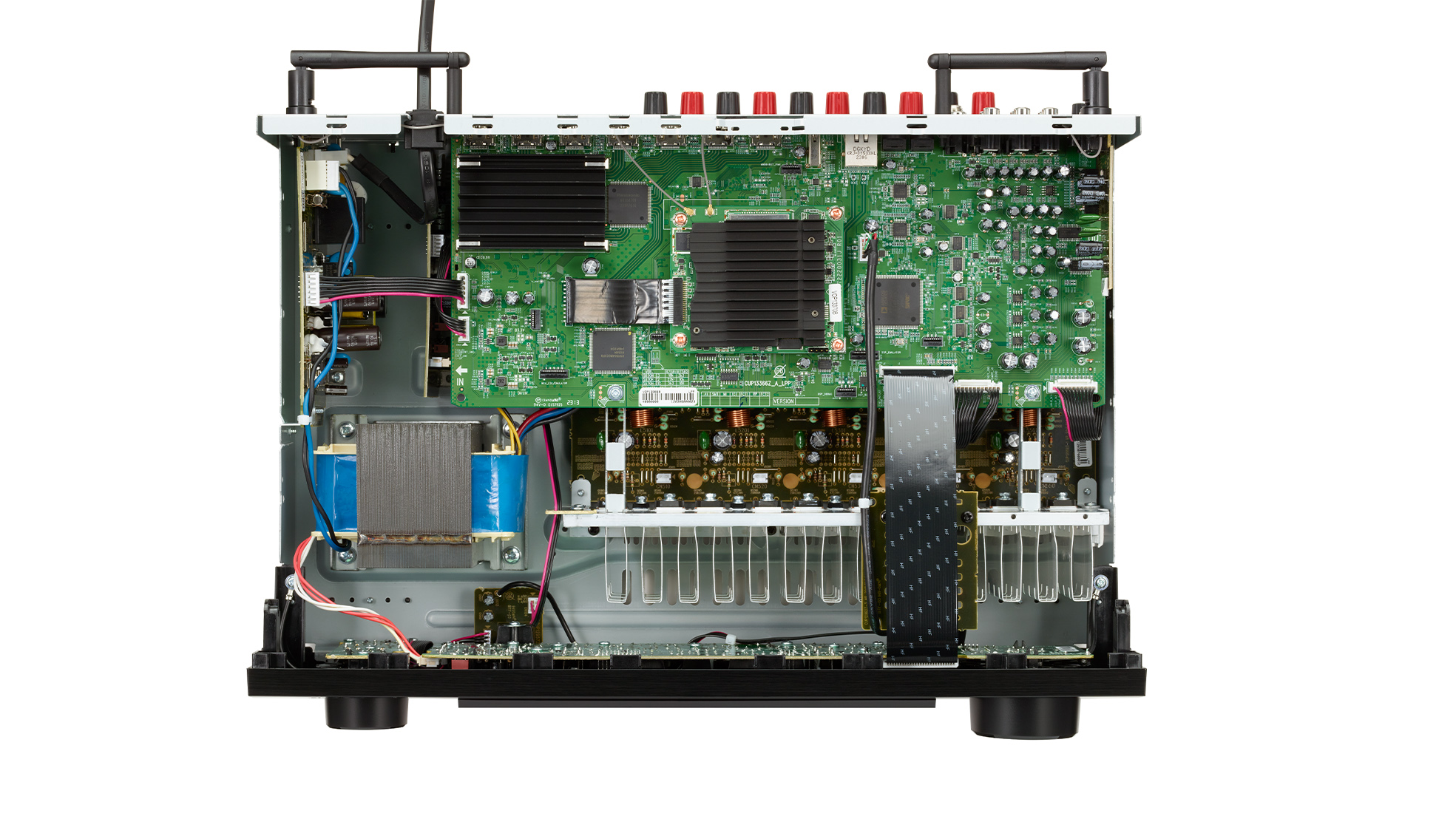
The AVR-X2800H isn’t a hugely bassy performer, but it’s much weightier and richer than the AVR-S670H and still has the same energy and pace. It also supports Dolby Atmos and DTS:X, which, if you don’t want now, you might want to upgrade to in the future.
We fully appreciate that the AVR-X2800H is a higher-end receiver whose price might rise again in the future, but its price history suggests that the current discount in the UK is far from unusual and it’s quite simply a much better AV receiver.
More importantly, though, the AVR-S670H unfortunately just isn’t a great receiver in its own right. While its drive and enthusiasm are laudable, it’s too lightweight, dynamically limited and lacking in surround cohesion to provide a truly satisfying cinematic experience. Consider it a very rare miss from Denon.
SCORES
- Sound 3
- Build 4
- Features 4
MORE:
Read our review of the Denon AVR-X2800H
Also consider the Samsung Q990D
Best AV receivers: the top home cinema amplifiers we've tested







